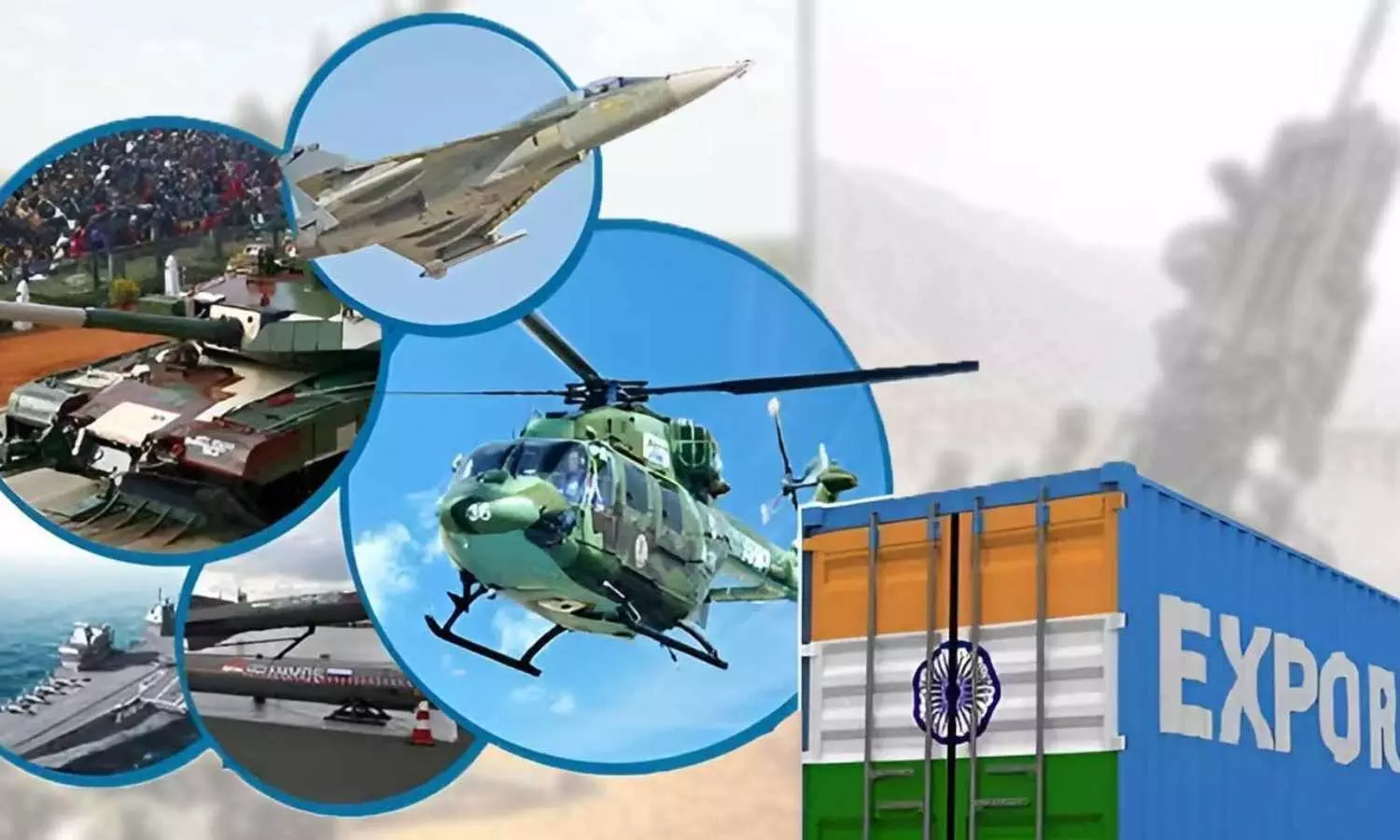India’s Defence Exports thrust
India’s defence exports soared to a record ₹23,622 crore in FY 2024‑25—a 12% jump—with major deals and private sector contributions strengthening Aatmanirbhar Bharat ambitions.
India’s Defence Exports thrust

India's defence exports have surged to a record high of ₹23,622 crore (approx. US$ 2.76 billion) in the Financial Year (FY) 2024-25.
The private sector and Defence Public Sector Undertakings (DPSUs) have contributed Rs 15,233 crore (64.5%) and Rs 8,389 crore, respectively in defence exports of 2024-25.
DPSUs have shown a significant increase of 42.85% in their exports in the FY 2024-25.
In the past 10 years, from 2015 to 2025, India has cumulatively exported defence goods and equipment worth ₹1,09,997 crore. India aims to increase its defence exports to ₹50,000 crore by 2029.
India now exports defence equipment to over 100 countries, with the USA, France, and Armenia emerging as the top buyers in 2023-24.
Export Portfolio includes missile systems like the Akash Surface-to-Air Missile (SAM), Advanced Towed Artillery Gun Systems (ATAGS), naval platforms such as fast attack craft and offshore patrol vessels, as well as aerospace assets like the Light Combat Aircraft (LCA) Tejas and Advanced Light Helicopters (ALH Dhruv).
Indian industry is reliant on imports for critical components for defence equipment such as engines, avionics, and sensors.
There is a considerable gap in R&D for advanced technologies, including AI-driven systems, hypersonic missiles, and stealth technologies.
India's defence exports encounter stiff competition from established global players like the United States, Russia, and France.
Challenges include overcoming quality perceptions and addressing technological gaps in advanced platforms such as stealth fighters and high-end UAVs.
India’s defence budget is expanding fast. Over the next decade, total spend is expected to cross US$ 200 billion, aided by an economy on course to touch US$ 10 trillion. The capital outlay for FY26 alone stands at Rs 1.8 trillion, up 13% from the previous year’s revised estimate.
Plans are afoot to triple domestic defence production to Rs 3 trillion by FY30, while boosting exports fivefold to Rs 500 billion. These are not empty targets for conference slides, production has already trebled since FY15 and exports have shot up 30 times in the same period.
India’s ambition to transform from a top arms importer to a credible exporter is real, but the climb is steep.
Exports have hit Rs 210 bn (~$2.5 billion), a tenfold jump over a decade. But this is still less than 1% of global arms exports. By comparison, the US and China dominate these flows. India’s Tejas jets, BrahMos missiles and artillery systems have sparked interest in Southeast Asia, Africa and the Middle East.
But global buyers want more than just platforms, they want certainty. Timely delivery, reliable after-sales support and proven supply chain strength. India’s patchy execution record raises questions.
India's defence exports have surged dramatically, increasing 34-fold in the last decade, reaching Rs 23,622 crore in 2024-25. This growth, fueled by the 'Atmanirbhar Bharat' initiative, aims for Rs 50,000 crore in annual exports by 2029.
The Defence Acquisition Council has cleared orders worth Rs 8.5 trillion between FY23–25, equal to what was approved over the previous decade.
The upcoming opportunity list includes: Six P75I submarines; Three Kalvari-class submarines; Seven P-17B frigates and next-generation corvettes; 180+ LCA Mk-1A jets and Light Combat Helicopters; and QRSAM missile systems and electronic warfare combat suites.
This could flood the order books of HAL, BEL, Mazagon Dock, Cochin Shipyard and Data Patterns for years. But that’s only if everything proceeds to plan.
According to recent data from the Stockholm International Peace Research Institute (SIPRI), the United States has surged ahead as the top exporter of arms. Between 2015–19 and 2020–24, American exports grew by 21%, raising its global share from 35% to 43%.
About 107 countries now source weapons from the United States. Notably, Europe overtook the Middle East in imports, taking in 35% of US exports versus the Middle East’s 33%. Saudi Arabia alone accounts for 12% of US arms purchases.
In contrast, Russia – long considered America’s rival – has seen its share of global arms exports decline by 64% in the same period. Sanctions stemming from the Ukraine conflict have shifted demand, leading many nations to pivot away from Russian suppliers toward American systems.
Though India still trails in arms exports, it is entering the global defense market with momentum. Recent defense collaborations involve smaller arms, missile systems and tactical equipment sold to countries such as the Philippines, Vietnam and Armenia – hinting at New Delhi’s growing niche in military trade.
On the import side, the SIPRI identifies Ukraine as the world’s biggest weapons buyer, having increased its purchases a staggering 100-fold between 2015–19 and 2020–24. India follows in second place, although its arms imports dropped by 9.3% in 2020–24.
At present, India accounts for 8.3% of global arms imports.

